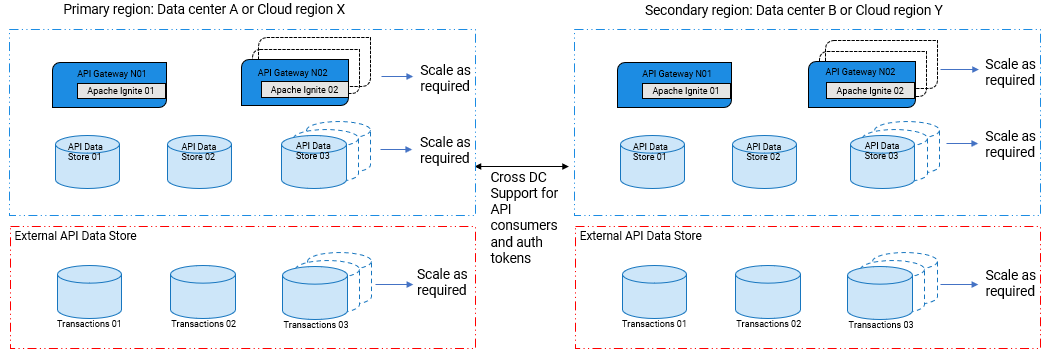High Availability and Fault Tolerance
The architecture of high availability through fault tolerance is as follows:
High availability and fault tolerance solution ensures availability of services with very minimal downtime in case of a failure. Data centers are set up in different geographical regions to ensure business continuity and operational flexibility. This architecture provides greater resiliency compared to the HADR solution. However, the cost of this solution is high due to the availability of services in different data centers. For achieving high availability through fault tolerance, API Gateway provides Cross DC support through which volatile data like API consumers, OAuth tokens, and so on are federated across the data centers.
The Cross-Data Center (DC) support provides protection against data center failures by setting up API Gateway across different data centers using: Hot standby mode or Active-Active mode.

